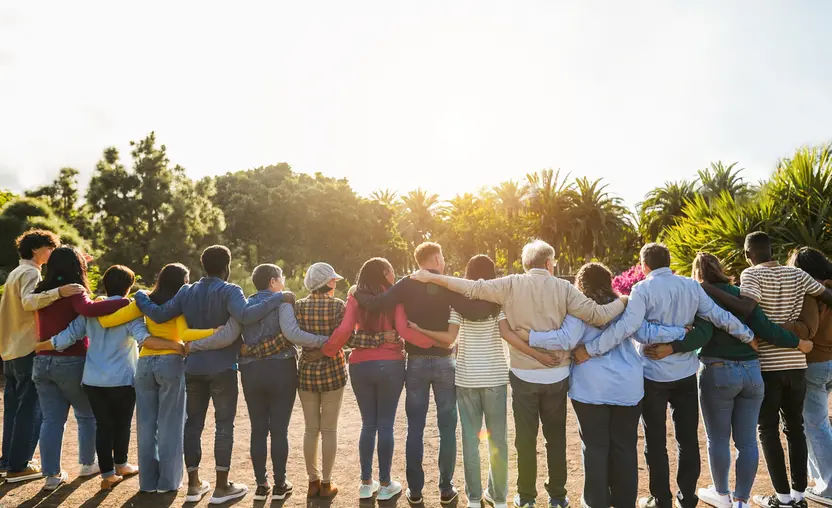If you’ve worked in the fundraising space, you’re probably familiar with the term “rage giving.” This refers to a flurry of donor activity prompted by an immediate crisis or current event. As Bonterra’s chief fundraising officer (and someone who spent much of my career working with and fundraising for nonprofits) I’ve witnessed the impact of rage giving in the wake of social and racial injustice movements, international conflict, the Dobbs decision, and much more.
There’s a lot to be said for supporters who feel so passionate about individual rights or justice that they immediately donate; the action gives people the much-needed feeling of doing something to help. And, of course, giving is always personal. I remember the first time I dropped a small bit of my weekly allowance into the church donation basket as a child—it was a genuine endorphin surge. The challenge with rage giving, however, is figuring out how to transform that first instance of personal initiative into something longer-term.
Even though they’re grateful, nonprofits are often caught off-guard and overwhelmed by the sudden avalanche of goodwill. What we’ve discovered is that organizations that can turn that initial rage into ongoing hope grow their community of supporters in a more sustainable way. And frankly, hope is better for all of us— research about hope notes that it’s action-oriented and that individuals who are motivated by hope feel like life has more meaning and they’re less depressed and anxious.
This industry is built on hope. While rage can infuse that hope with surges of excitement and energy, the deep belief that we can make a difference keeps us all going.
5 tips for cultivating hope
Rage-giving is lightning in a bottle. For one Tennessee-based reproductive rights organization, the phenomena materialized as $150,000, gleaned from their spring fundraiser in 2022, up from $2,000 the year before. In 2023, they raised $40,000. The influx is encouraging, but the fall-off can be the opposite.
The good news is that giving people want to give. In many cases, organizations just need to create more and easier opportunities for that giving to continue after the crisis abates. Here are five ways that nonprofits can cultivate hope in their donors and create more sustainable giving patterns:
1. Review your fundraising infrastructure. This sounds technical, but it’s what separates sporadic gifts from sustaining gifts. Start by ensuring that your website’s giving or donation pages are quick and easy to use. In addition, making monthly giving your default option (with a simple click to select a one-time gift if preferred) provides first-time donors with the immediate opportunity to continue their support. You capture them in the moment but offer the opportunity for a longer-term relationship.
2. Personalize your acknowledgements. Many organizations neglect to personally acknowledge the gifts they receive. This is especially true during instances of rage giving—there are often a lot of donations in a short time period so donation receipts double as acknowledgements. Try to follow up with a note to the donor, beyond a receipt, that addresses them by name and highlights the impact they made. For more significant gifts, consider sending a video of appreciation. You can leverage your ED, board members, or program officers to help. Our Bonterra customers routinely share how powerful a personal thank you is; sometimes, donors are so appreciative that they make a second gift immediately.
3. Keep donors updated. If individuals donated as a response to an event, keep them posted on your organization’s work and progress toward that cause. Rage givers may think they’ve helped all they can but continue to reach out and remind them why their ongoing support remains critical. For instance, I donated to a local hospice organization after my mother passed away because I truly appreciated what they did. However, the organization never solicited me again. I think I would have continued giving if they’d reminded me of their needs. In addition, when things improve for your organization, tell your donors, and then invite them to celebrate and be part of a new opportunity for impact.
4. Survey your donors regularly. Many organizations have told me, “I know who my donors are and why they give.” But unless you’ve recently surveyed your donors or conducted focus groups, you may not fully understand why they are giving to you. Or you may only have insights from major donors or your board. This is a common misstep in our sector. We assume that people give because they want to support a cause, but that’s not always the case or the only reason. A donor may give for a multitude of other reasons—locality, professional ties, family connection, or even simply because they were asked. Donor surveys provide better insight into the reasons for giving, program interests, volunteer interest, and the potential for more personalization and communication.
5. Keep trying—it’s worth it. The work that you’re doing to help fundraise and cultivate support for your organization is important and challenging. As someone who has worked in and with nonprofits for nearly my entire career, I understand that. And there are thousands of fundraisers out there who feel your pain. But we all keep pushing because we’re hopeful that we can make the world a better place. So, experiment with your fundraising, engage and connect with your donors, and see what works best for your organization. Try to not get stuck in the “we’ve always done it this way” mentality. You don’t have to be perfect; your effort is part of the progress.
This industry is built on hope. While rage can infuse that hope with surges of excitement and energy, the deep belief that we can make a difference keeps us all going. Look for opportunities to transform the anger and rage of your first-time donors into hope, and you’ll cultivate a sustainable community dedicated to your cause during crises and beyond.




